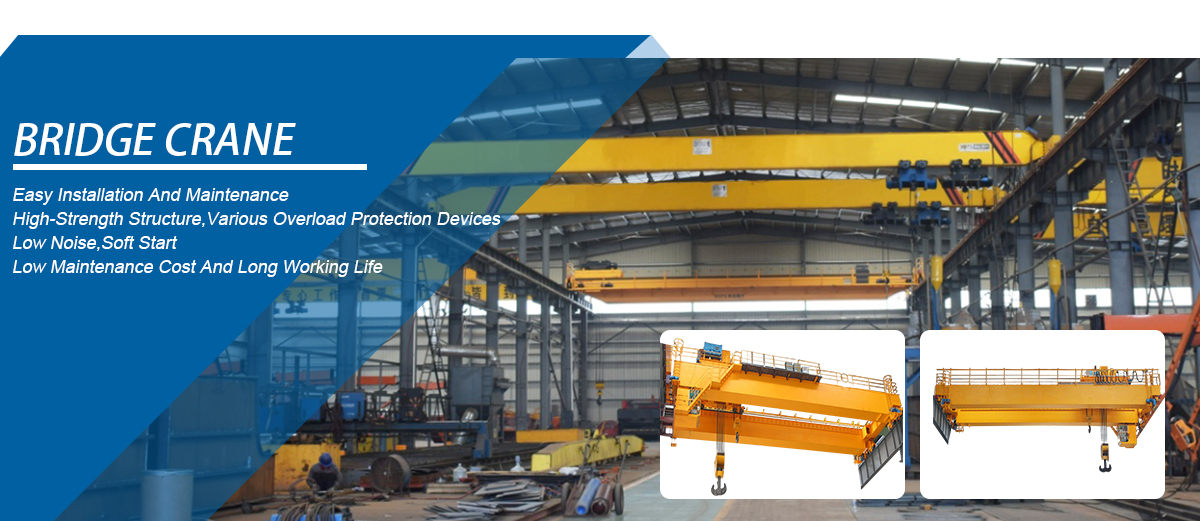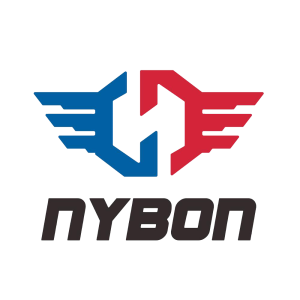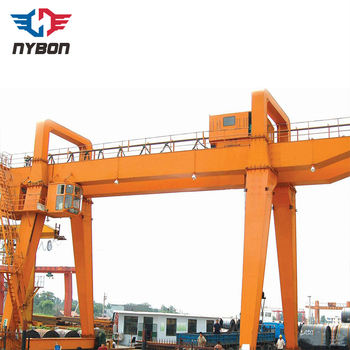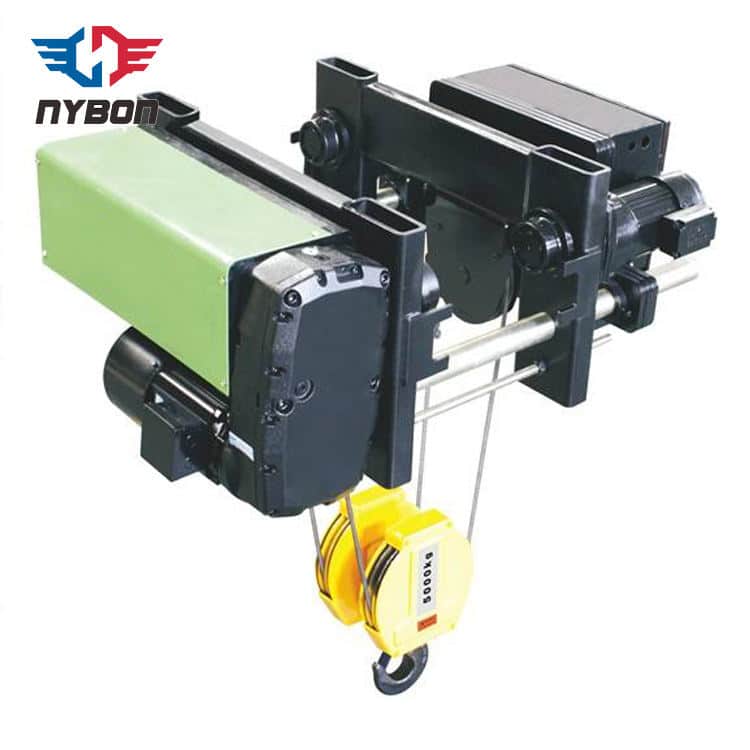Bridge Crane Installation Guide – Steps, Tips & Best Practices
Installing a bridge crane is a crucial step in setting up any industrial lifting system. A well-planned and properly executed installation ensures optimal performance, long-term safety, and minimal downtime.
In this guide, Nybon Machinery outlines the key steps, requirements, and tips to help you install your bridge crane correctly, whether you’re working with a single girder, double girder, top-running, or underhung model.

📍 Step-by-Step Bridge Crane Installation Process
1. Site Preparation
-
Ensure the installation area is clean, dry, and level.
-
Verify that runway beams or supporting columns meet load and alignment specifications.
-
Remove any obstructions from the installation zone.
2. Foundation and Runway Setup
-
Anchor runway beams or freestanding support structures.
-
Use a laser level or total station to ensure precise horizontal and vertical alignment.
-
Verify span dimensions and bracket positions before tightening bolts.
3. Bridge Assembly
-
Assemble the main girders and end trucks on the ground.
-
Mount the trolley and hoist as per the manufacturer’s instructions.
-
For double girder cranes, install the trolley rail atop the girders.
4. Lifting and Positioning
-
Use a mobile crane or forklift to lift the assembled bridge into position.
-
Align and bolt the end trucks onto the runway rails.
-
Check for smooth travel along the entire runway length.
5. Electrical Connection
-
Install power supply systems (conductor bar or cable festoon).
-
Connect control panels, hoists, limit switches, and emergency stops.
-
Ground all electrical components to prevent overload and short circuits.
6. Functional Testing
-
Test hoisting, trolley, and bridge travel individually and together.
-
Adjust limit switches for lifting height and end-of-travel limits.
-
Perform load testing (typically at 125% of rated capacity).

✅ Installation Requirements at a Glance
The hoist must match or exceed your maximum lifting requirement. Typical capacities include:
| Item | Minimum Requirement or Guidance |
|---|---|
| Runway Beam Alignment | Deviation ≤ ±2mm over 10 meters |
| Bridge Span Accuracy | Deviation ≤ ±3mm total span |
| Power Supply | 380V/3Ph/50Hz (standard, customizable) |
| Grounding Resistance | Less than 4 ohms |
| Load Test Requirement | Static test at 125% / Dynamic test at 110% of rated load |
🔧 Expert Installation Tips
-
Use anti-loosening fasteners (spring washers or lock nuts) for all mechanical joints.
-
Apply industrial-grade lubricants to rail joints, hoist gears, and moving parts.
-
Mark limit switch activation zones clearly for future adjustments.
-
Always follow national codes like OSHA, FEM, or ISO 12480 for overhead crane installation.
-
Don’t forget to install bumpers, buffers, and end stops on both ends of the runway and bridge.
🏗 Who Should Perform the Installation?
Bridge crane installation should be carried out by:
-
Certified in-house maintenance teams
-
Professional crane installation contractors
-
Nybon’s appointed engineers (available for overseas projects)
📌 Nybon provides detailed drawings, electrical schematics, and video tutorials with every product.
After Installation: Safety Checks
-
Perform a visual inspection for all connections and fasteners
-
Test limit switches and emergency stop buttons
-
Ensure warning labels are in place and readable
-
Confirm hoist braking and load lowering safety
-
Keep a log of the first load test results for future reference
Why Choose Nybon for Installation Support?
-
Experienced engineering team for remote & onsite guidance
-
Complete documentation: 2D/3D layout, foundation drawings, manuals
-
Custom design services to fit your building constraints
-
24/7 technical support via email or WhatsApp
📧 Email: info@nybonmachinery.com
📱 WhatsApp: +86-15936506686
FAQ – Bridge Crane Installation
How long does crane installation usually take?
Typical installation time is 2–5 days depending on crane type, site conditions, and team experience.
Can Nybon provide installation abroad?
Yes. We offer remote guidance and can send engineers overseas for large projects.
What tools are needed?
Basic tools include lifting equipment, torque wrenches, laser levels, electrical testers, and safety gear.
Is testing mandatory after installation?
Yes. Both static and dynamic load testing must be performed before the crane is put into full operation.
At Nybon Machinery, we specialize in custom-engineered gantry crane systems tailored to your operational needs. With years of experience and advanced production capabilities, we ensure quality, safety, and performance in every system we deliver.
Need a Crane System?
Contact us for a free consultation and customized solution.
📧 info@nybonmachinery.com | 📞 WhatsApp: +86-15936506686
As a professional Industrial Crane Supplier, Nybon offers
- Customizable Solutions – Available in various load capacities, speeds, and configurations to meet specific industrial requirements.
- High-Quality Manufacturing – Built with strict quality standards to ensure durability, reliability, and long service life.
- Low Maintenance Requirements – Engineered for minimal maintenance, reducing downtime and operational costs.
Get A Quote Today
Welcome to send a free inquiry to —info@nybonmachinery.com






